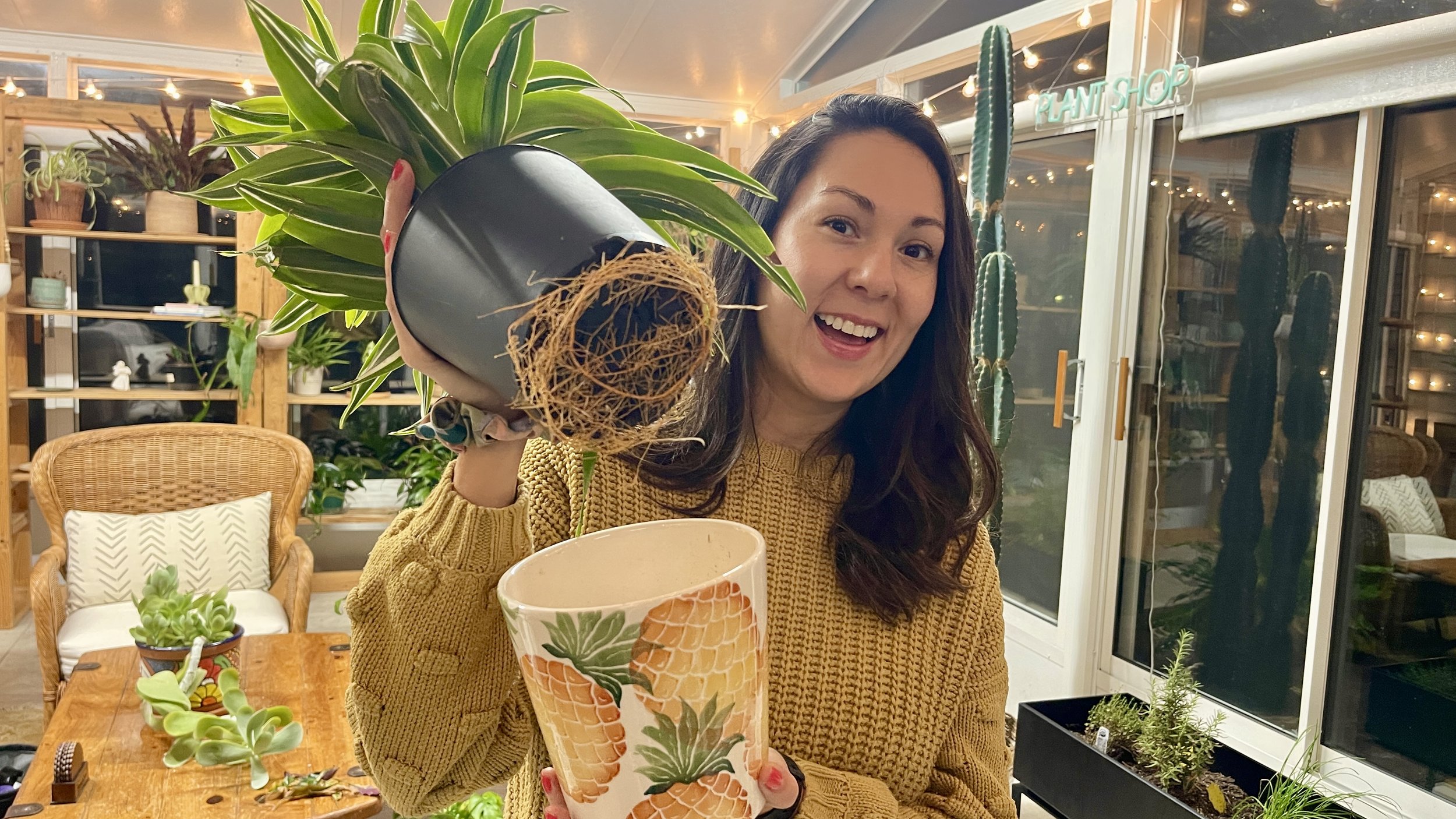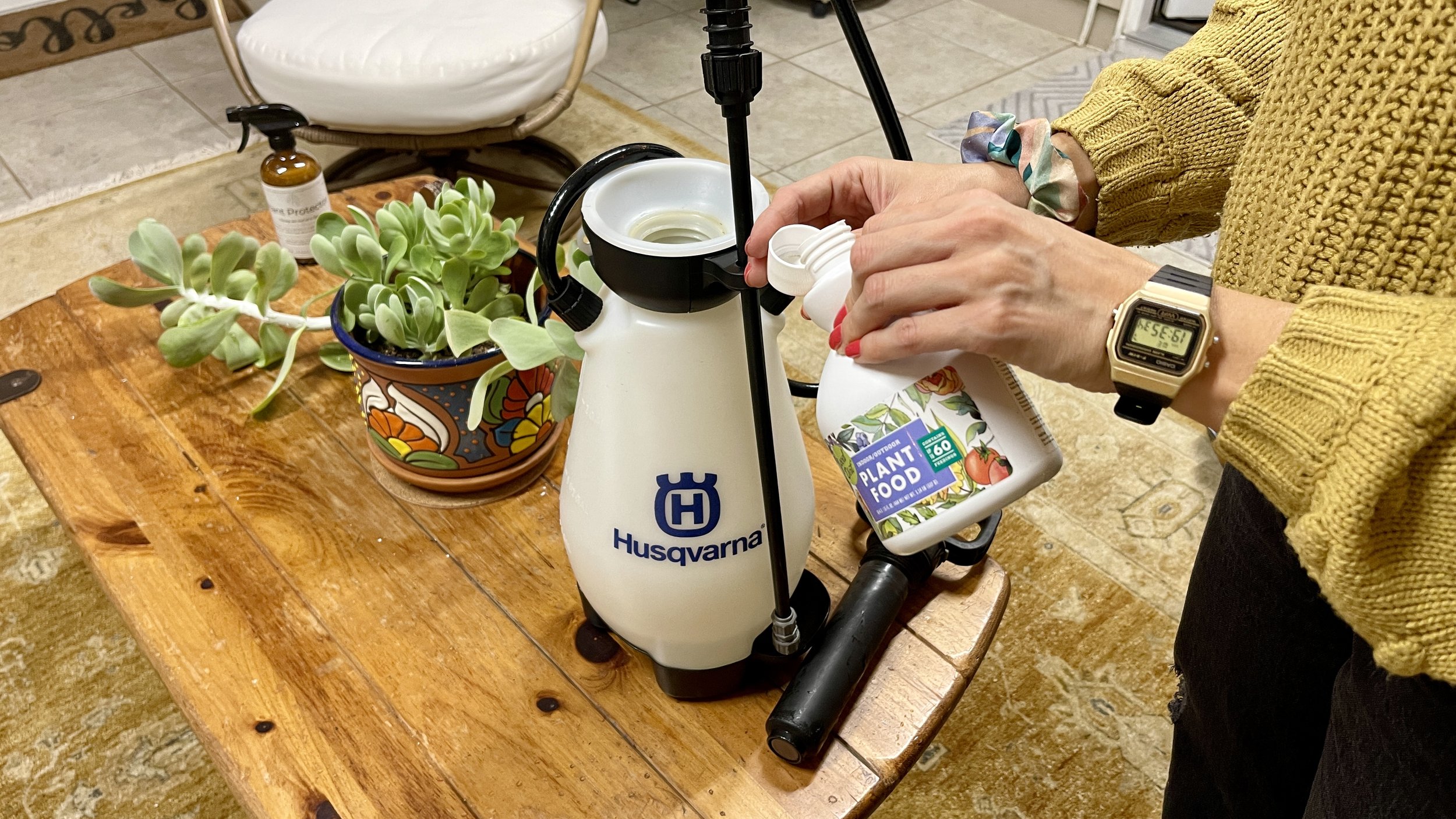Springtime Plant Care Rituals from a Houseplant Expert
Spring is a time for growth in the houseplant world. Like their outdoor counterparts, your houseplants are beginning to ‘wake up’ after the winter season of reduced light hours and colder temps. The days are getting longer, and we’re beginning to see first buds on trees. With this change in season, I like to take some time to give my indoor plants a little TLC.
Getting Organized
With over 130 indoor plants in my collection, I have my routine down. I start from room to room. This helps keep the project from feeling overwhelming. Once I’ve chosen my first location, I queue up my favorite Latin music playlist to put me in a great mood to care for my plants!
I place all my plants on a tarp in the middle of the room to avoid mess. It makes cleaning up after myself that much easier. Once my plant babies are together, I move through the room, clearing dust from the shelves and surfaces where plants have been. I also thoroughly clean my windows to ensure that light is coming through properly.
A Fresh Haircut
Once I’ve tidied up my plant space I move on to care. I start by removing dead and yellowing leaves, as well as cutting off any brown tips. In doing this, I remove any unnecessary bulk on my plants and ensure they’re in tip-top shape for growth.
Next, I check all my plants for support. If they’re not standing on their own, I add extra support with a stake. This is especially helpful with my top-heavy plants. I then check my plants' soil levels and quality and add new soil to those in need of it.
Repotting Checklist
Now that my plants have a fresh haircut and the support that they need, I make a list of the plants that need to be repotted. Here’s what I look for when knowing if I need to repot my plants:
Needing to water a plant more than once a week.
Roots coming out of the drainage holes.
It’s been over two years since repotting.
The plant looks crowded.
If I have time and a suitable planter, I go ahead and repot those plants now. If not, I add it to my repotting checklist to find the perfect planter for each plant baby.
Time for a spring shower
Weather permitting, I like to take my plants outside and give them a thorough wash with my garden hose on a light spray setting. If warmer weather hasn’t quite come around, I bring them to my shower. Giving plants a good rinse helps to remove dust and particles from their leaves to assist in photosynthesis. I notice a huge difference in my plants after this! They love it! I do this at least twice a year.
Find What’s Bugging You
Here’s what I do to prevent pests on my houseplants:
After I shower them, I thoroughly check on the top and bottom of leaves for any unwanted visitors.
I spray them with my plant protector to prevent any pests. This spray is all-natural and formulated to gently keep pests away. I spray my plants preventatively once a month.
If I notice any unusual bug activity, I move the plant in question to a separate area away from my other plants. I treat an infested plant once per week with my plant protector.
A Healthy Diet
To ensure my plants are getting the nutrients they need to grow big and beautiful, I use a cap full of Good Dirt plant food per gallon of water. Using a pump sprayer to do this makes watering so much easier, and I can use it to water all my plants. I use plant food once a month, and I’ve noticed a huge difference in the number of new leaves I see on my plants.
Almost done!
Last, but not least, I let my plants drain and once they’re ready to go back to their homes I put them back! It’s important to choose planters that have drainage holes, so your plant babies can properly drain excess water, and you don’t have to worry about root rot.
To protect my surfaces from water, I use trays under my plants. This way, your furniture won’t get a drink along with your plants. I regularly rotate my plants to give all the leaves an even amount of light. This helps keep the plant from leaning and promotes new growth in areas that could otherwise stagnate. Depending on their lighting needs, I rearrange my plants slightly for a bit of a change of scenery.
Now, I’m done! I repeat this process in each room of my home till my plants are all set for an amazing spring growing period.
Getting your plants ready for spring can seem overwhelming, but I hope this guide helped you feel ready to prep your plant babies for success. If you want a little TLC, I am always happy to help you! Click here to find out about my in-person and virtual consultations.









